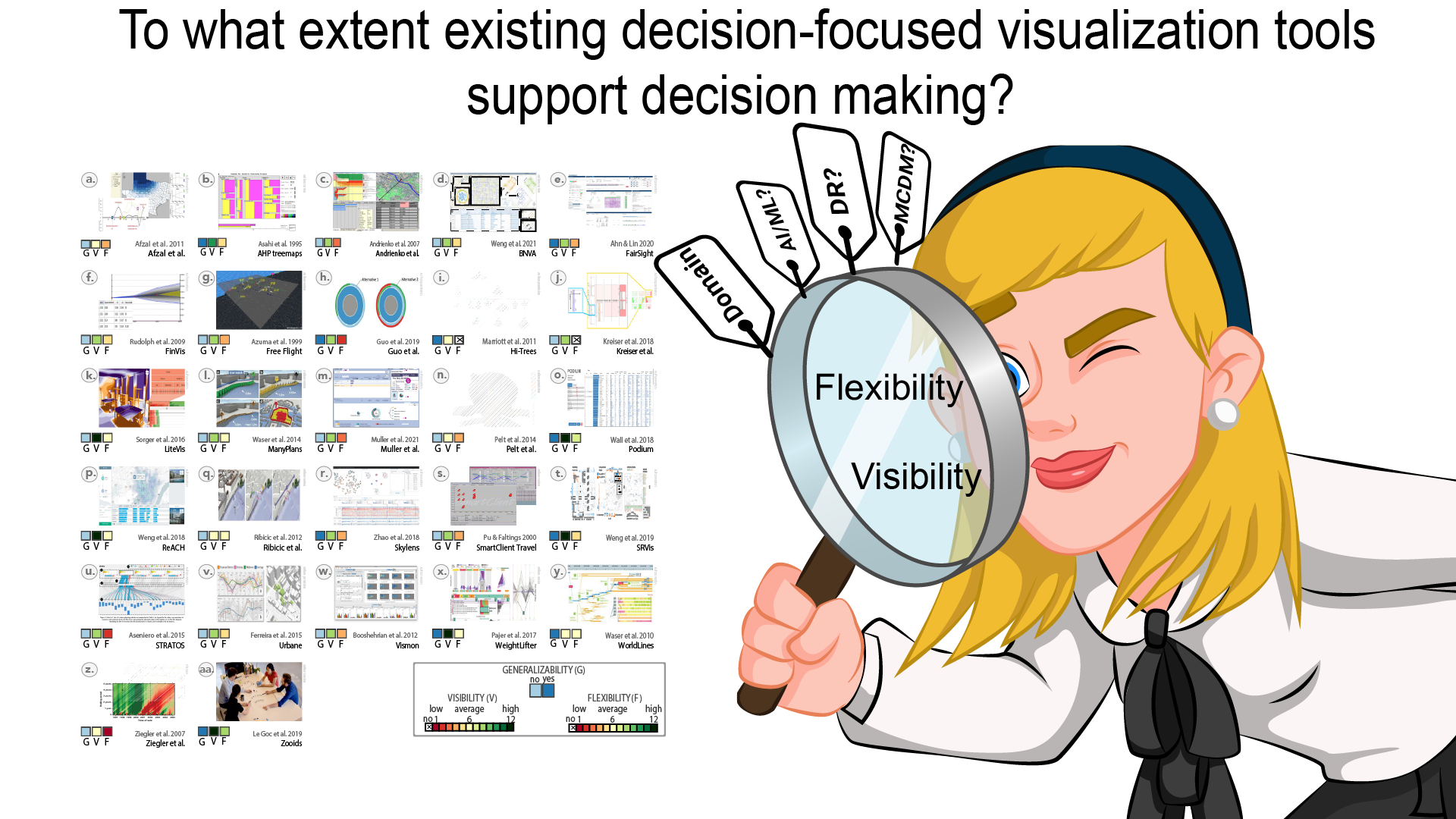From Information to Choice: A Critical Inquiry Into Visualization Tools for Decision Making
Emre Oral, Ria Chawla, Michel Wijkstra, Narges Mahyar, Evanthia Dimara
DOI: 10.1109/TVCG.2023.3326593
Room: 103
2023-10-25T03:36:00ZGMT-0600Change your timezone on the schedule page
2023-10-25T03:36:00Z

Fast forward
Full Video
Keywords
Decision making;visualization;state of the art;review;survey;design;interaction;multi-criteria decision making;MCDM
Abstract
In the face of complex decisions, people often engage in a three-stage process that spans from (1) exploring and analyzing pertinent information (intelligence); (2) generating and exploring alternative options (design); and ultimately culminating in (3) selecting the optimal decision by evaluating discerning criteria (choice). We can fairly assume that all good visualizations aid in the “intelligence” stage by enabling data exploration and analysis. Yet, to what degree and how do visualization systems currently support the other decision making stages, namely “design” and “choice”? To further explore this question, we conducted a comprehensive review of decision-focused visualization tools by examining publications in major visualization journals and conferences, including VIS, EuroVis, and CHI, spanning all available years. We employed a deductive coding method and in-depth analysis to assess whether and how visualization tools support design and choice. Specifically, we examined each visualization tool by (i) its degree of visibility for displaying decision alternatives, criteria, and preferences, and (ii) its degree of flexibility for offering means to manipulate the decision alternatives, criteria, and preferences with interactions such as adding, modifying, changing mapping, and filtering. Our review highlights the opportunities and challenges that decision-focused visualization tools face in realizing their full potential to support all stages of the decision making process. It reveals a surprising scarcity of tools that support all stages, and while most tools excel in offering visibility for decision criteria and alternatives, the degree of flexibility to manipulate these elements is often limited, and the lack of tools that accommodate decision preferences and their elicitation is notable. Based on our findings, to better support the choice stage, future research could explore enhancing flexibility levels and variety, exploring novel visualization paradigms, increasing algorithmic support, and ensuring that this automation is user-controlled via the enhanced flexibility levels. Our curated list of the 88 surveyed visualization tools is available in the OSF link (https://osf.io/nrasz/view_only=b92a90a34ae241449b5f2cd33383bfcb).